The lat pulldown can be a reliable and effective alternative to back-training staples like chin-ups or pull-ups. Pulldowns can be useful for novice lifters who may not yet be strong enough to perform high-quality repetitions, as well as more experienced lifters looking to minimize the role of their core or lower body while zeroing in on back musculature.
The pulldown can be taken to another level, however, once you recognize that the exercise doesn’t need to be performed with both hands fixed to one straight bar. This familiar setup can make for a smooth and stable pull, but it also disguises just how much work one side of your body is doing compared to the other side.
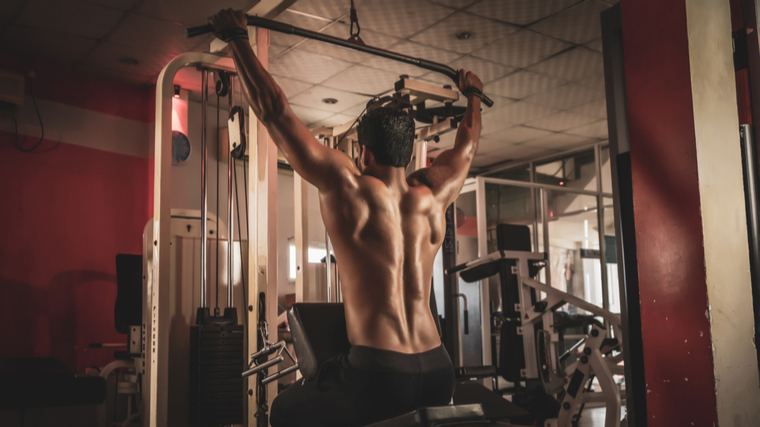
For this reason, opting for a unilateral (single-sided) movement can provide unique benefits and increased back focus. When the name of the game is muscular development and pulling strength, these details are huge. Here’s how to get your back on track with the single-arm lat pulldown.
Single-Arm Lat Pulldown
- How to Do the Single-Arm Lat Pulldown
- Single-Arm Lat Pulldown Mistakes to Avoid
- How to Progress the Single-Arm Lat Pulldown
- Benefits of the Single-Arm Lat Pulldown
- Muscles Worked by the Single-Arm Lat Pulldown
- How to Program the Single-Arm Lat Pulldown
- Single-Arm Lat Pulldown Variations
- Frequently Asked Questions
Ideal Single-Arm Lat Pulldown Technique Demo
Coach Lee Boyce provides a clear demonstration of the single-arm lat pulldown in action. See the movement performed with each arm and then read on to learn the details.
How to Do the Single-Arm Lat Pulldown
The single-arm lat pulldown may feel slightly awkward at first, especially if you’re not used to performing back exercises with one arm at a time. But any time spent learning the movement will pay off with new size and strength.
Step 1 — Know Your Equipment
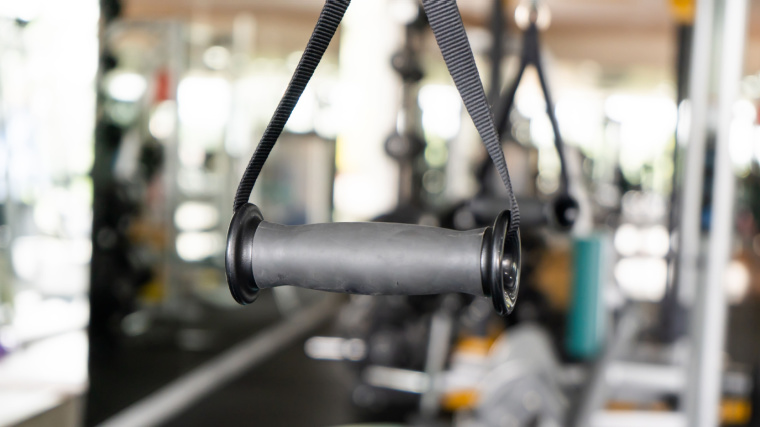
You may be stuck with whatever equipment your gym offers, but some pulldown setups are more user-friendly than others. The gold standard is a dual pulley system. This makes it easy to attach individual handles to each pulley, which will be more naturally aligned with each of your shoulders.
The second best option would be a singular pulley attachment that operates on a pivot. That way, even though the pulley is positioned in the center above your head, it still turns in the direction of your working arm during the movement.
Least optimal would be a single pulley attachment that is completely fixed to the machine with no room to turn or pivot. Many older pieces of equipment are constructed this way, but if it’s the only “pulldown” station available, consider setting up either on the floor at a manually adjustable cable setup (like one for triceps pressdowns) or on the ground beside the seat at the pulldown station.
Form Tip: The key point is to position the pulley as close in-line with your working-side shoulder as possible. This will allow the most comfortable, most efficient line of pull during the exercise.
Step 2 — Sit Tight, Grab Hold, and Stretch
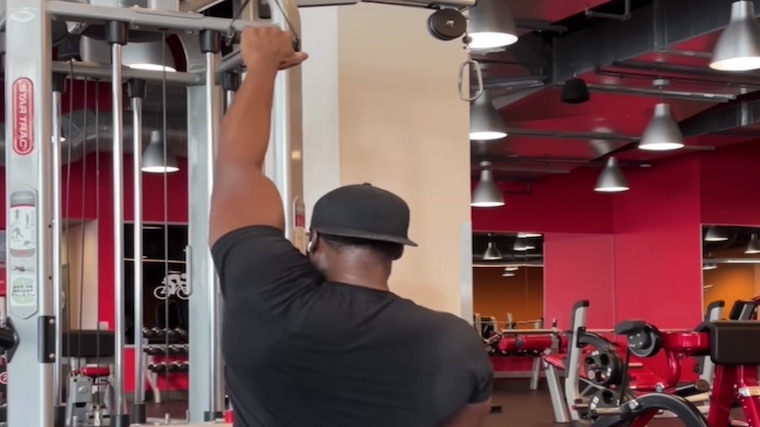
Secure your thighs under the pad and reach up to get a hold of the handle. Because you’re only reaching one arm, it should be easier to stretch higher while reaching above your head.
Your body will naturally reach higher with one arm compared to raising both arms overhead. If you have doubts, you can quickly test it yourself — Stand facing a wall and raise both hands above your head to touch the highest point you can reach. Then drop one hand and repeat. You’ll undoubtedly get higher with the single arm by comparison.
In the overhead stretched position, your palm should face toward the machine.
Form Tip: This deep stretch will allow you to contract and stretch through a longer range of motion, which will enhance the training effect on the target muscles. (1)
Step 3 — Set Your Shoulder and Pull
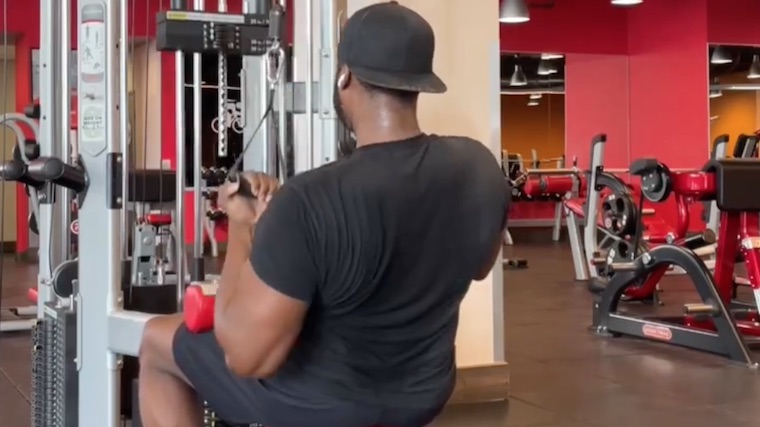
Rest your non-working hand comfortably on the leg pad or on your torso. “Reverse” the stretched position by actively setting your working shoulder — lower it by pulling your shoulder blade down and “in” to your mid-back. Push your chest up high and make your neck “long.”
Pull through your elbow, don’t think about curling with your arm. Squeeze your upper back and lats tight. Think about tucking your elbow into your back pocket. Don’t let your upper body crunch sideways as you pull down.
Form Tip: Take advantage of the single handle, which allows you to play with your hand and wrist position. You can supinate (turn your palm to face you) as you lift the weight or or can rotate to a thumbs-up position. Find a wrist angle that works efficiently, comfortably, and powerfully for you.
Step 4 — Return to the Overhead Stretch

When your hand reaches shoulder-level, feel a strong contraction through your side. Return to the starting position by reversing the motion. Lower the weight slowly and control the movement as you reach overhead to full extension.
Don’t overstretch by leaning toward the non-working side. Keep your torso stable and vertical throughout the exercise. When your arm is straight, shrug your shoulder blade up for maximum activation.
Form Tip: Let your overall mobility and flexibility guide your movements. Ideally, aim to bring your hand down near shoulder-level. Don’t force any excessive range of motion and don’t turn it into an ab exercise by crunching to the side — that won’t help to recruit your back.
Single-Arm Lat Pulldown Mistakes to Avoid
The single-arm lat pulldown can invite some simple technique or programming errors that will reduce the muscle and strength gains. Here are the biggest points to watch out for.
Going Too Heavy
The most common mistake should almost go without saying, though it doesn’t only apply to the single-arm lat pulldown — check your ego at the door. This is a much more precise, unilateral version of the pulldown, which itself is notorious for overly heavy loading that requires more body swing than lat activation.
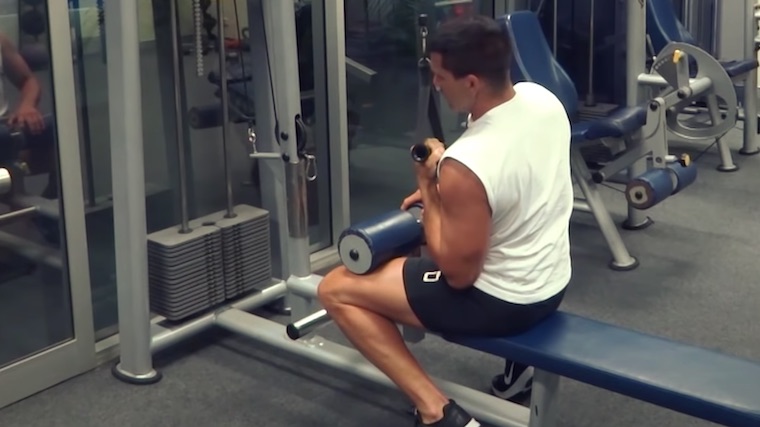
There’s no place for that with the single-arm lat pulldown, nor is there any real use for it. You’ll be subject to excessive swinging or twisting to get the weight down, and you’ll ultimately be using everything except your lats to get the job done.
Avoid it: Keep loading relatively lighter to reduce the temptation to swing the weight. Focus on using perfect form throughout each section of the movement and try to feel your back muscles contracting and stretching.
Slouching in the Finished Position
Like any back exercise, the goal should always be to maintain a “proud chest,” especially through the contracted phase of the lift, to ensure good posture and proper muscle activation.
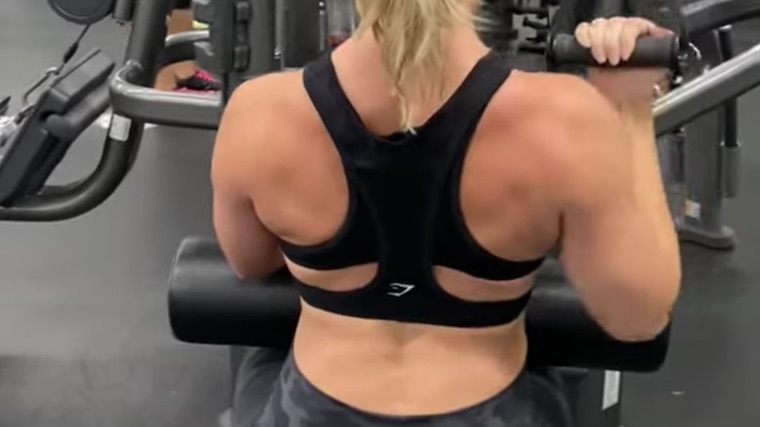
It’s easy to “close yourself up” as you complete the pull, by adding something of an abdominal crunch to the pattern. This is not ideal because it reduces stress on the target muscle and puts you in an inefficient position.
Avoid it: Focus on starting tall and finishing just as tall, or even taller. This posture cue will make you aware of your overall body position.
How to Progress the Single-Arm Lat Pulldown
As a relatively straightforward, cable-based exercise, you can approach this exercise with confidence no matter your experience level.
Adjust Load
Like many movements, you can adapt the challenge by simply changing the loading. Most cable stacks go as light as 10 to 20 pounds. Even while keeping your target rep range the same, you can accommodate nearly any strength level by reducing the weight to perform repetitions with crisp technique.
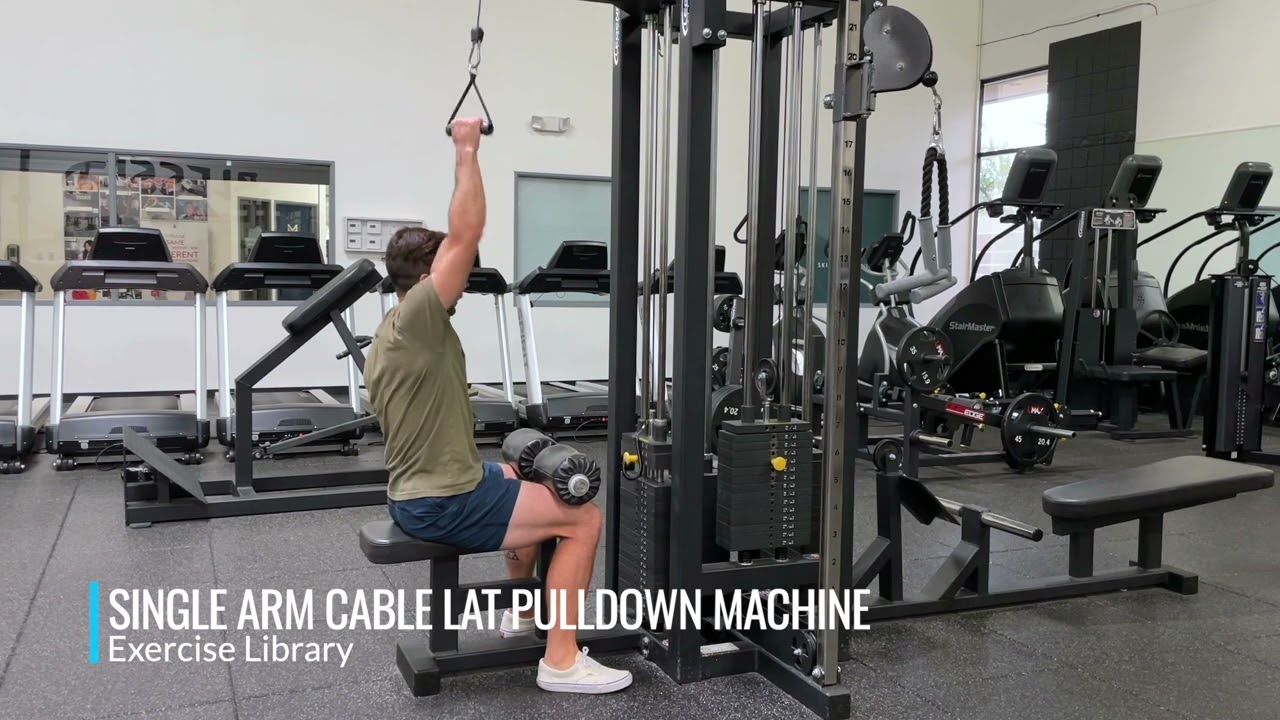
Similarly, you can go as heavy as possible while maintaining form. As previously discussed, swapping form for more weight is anything but productive. Fortunately, when using good technique and a moderate rep range, even the most experienced lifters will find the full weight stack to be more than enough.
Benefits of the Single-Arm Lat Pulldown
This unilateral movement offers the benefits of single-side training combined with the benefits of a cable pulley.
Scapular Mobility
Scapular mobility is the overlooked key to every successful back exercise, including the single-arm lat pulldown. Lifters sometimes mistakenly think that stability is the only function of the scapulae (shoulder blades). As such, they believe the scapulae shouldn’t be allowed to move during exercise.
This may be true in movements like the barbell bench press, but it’s not something that actually promotes shoulder joint health. For every joint in your body, there’s actually a certain degree of stability and mobility needed to maintain proper joint function. Depending on the joint in question, there will be a greater need for one over the other.
For example, hinge joints like the knees and elbows require more stability than mobility due to the limited nature of their responsibilities and available joint angles. There is still a degree of mobility they need to create proper range of motion, and to allow for a little bit of “give” laterally and medially.
In the case of the scapulae, stability is paramount, but it’s essential that they possess the capacity to move around the ribcage in elevation/depression (up and down), and in protraction/retraction (forward and back together).
This brings us to where most lifters drop the ball when performing pulling movements. Simply put, the shoulder blades must direct the action of any pull pattern – chin-ups, rows, and yes, pulldowns too. Initiating the movement by simply pulling with your hands won’t do much to engage the upper back muscles and lats.
To practice the proper mechanics, it’s useful to break the movement down into pieces, learning how to engage your lower traps, rhomboids, and lats. You can do this by keeping your elbow straight while pulling through only the first portion of the lift.
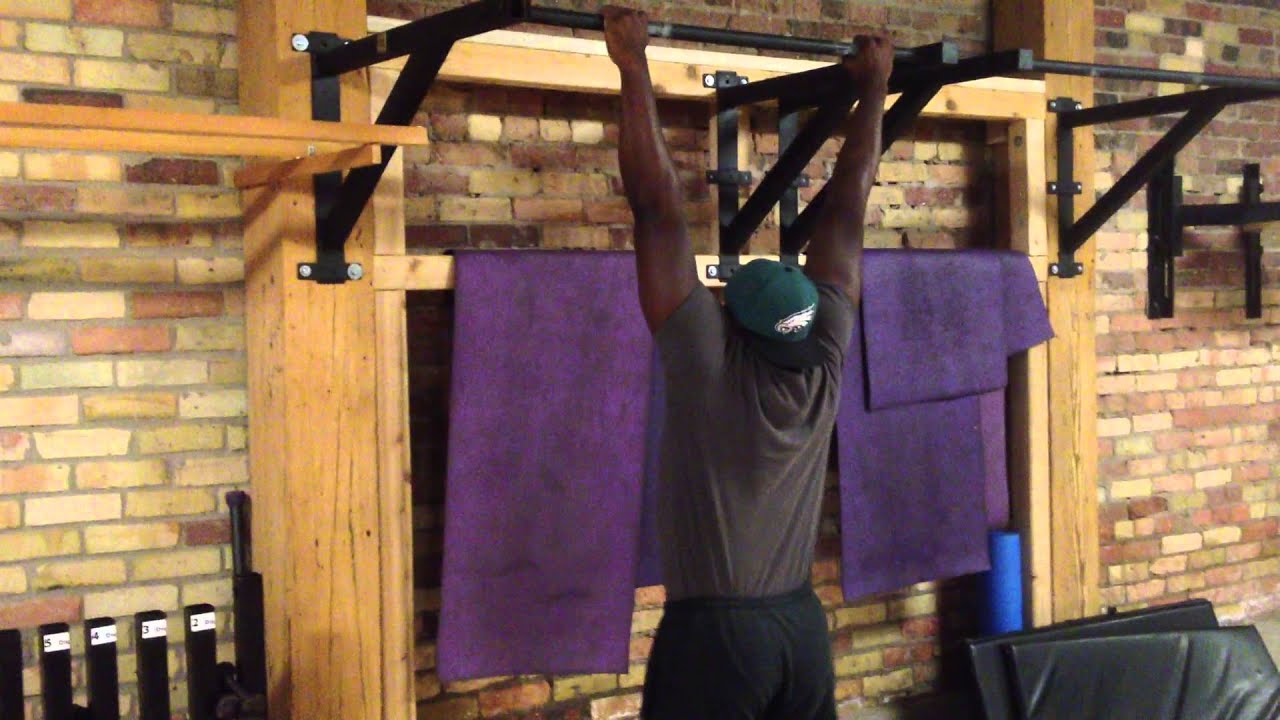
Applying this concept to the single-arm lat pulldown will support your quest for muscle, keep the focus in the right places, and keep your scapulae strong and healthy.
Muscle Size
The single-arm lat pulldown is a prime choice for hypertrophy due to its greater isolation on each individual side of the muscle — making each side of your back perform work on its own. The added stretch and long range of motion for each rep also supports muscle growth and strength.
Reduced Joint Strain
Using a single handle allows you to customize your hand and wrist’s start and finish position. This ability to rotate can be useful for lifters who struggle with a history of shoulder, elbow, or wrist issues. These seemingly small changes accumulate into a movement that takes on an entirely new identity as a hidden weapon for back day.
Muscles Trained by the Single-Arm Lat Pulldown
All pulldowns are considered “back exercises,” but the single-arm lat pulldown provides a unique spin on the generally familiar exercise. This results in a new approach to muscle reccruitment.
Lats
When done correctly, the single-arm lat pulldown primarily focuses on the lats. One key function of the latissimus (lats) is bringing your arm from an overhead position toward the body’s centerline.
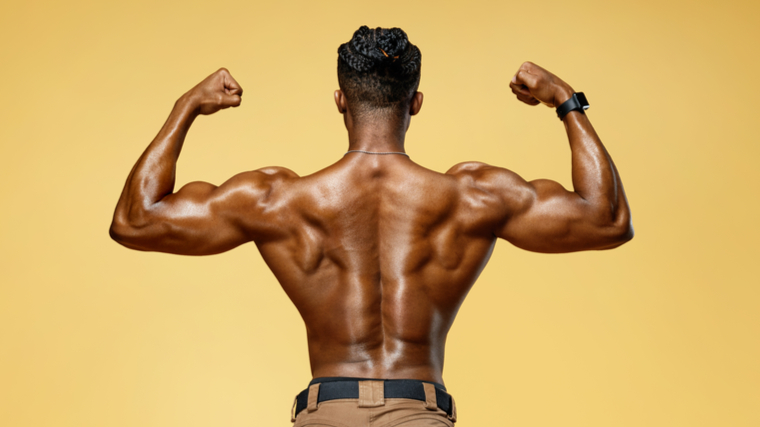
Because a lat muscle rests on each side of your back, the single-arm lat pulldown allows you to focus on one specific muscle during each set, which can address any developmental imbalances that may be present.
Upper Back
Your upper back, as a whole, contributes to the single-arm lat pulldown. Collectively, your lower trapezius and rhomboids work as direct synergists to support the prime mover (lats) during the exercise. Your upper back provides stability and support, while also controlling your scapulae during the overhead stretch and peak contraction.
Biceps
Your biceps are recruited in many back exercises as your arm extends and contracts. Particularly, your biceps are more significantly recruited as you rotate your hand into a supinated (palm facing you) position. (2)
Obliques
Because the single-arm lat pulldown is a unilateral exercise, there is an added contribution from your obliques on the sides of your abdominals. These muscles resist excessive lateral flexion (sideways bending) of the spine when performing the lift through a full range of motion. As you focus on keeping a stable torso during the exercise, your obliques are activated to maintain your posture.
How to Program the Single-Arm Lat Pulldown
Because the single-arm lat pulldown is a relatively focused exercise, being performed with one arm at a time, it’s not well-suited to very heavy loading. However, because of the multi-joint nature and high degree of muscular involvement, extremely high repetition training may fatigue support muscles before the primary target muscles.
Moderate Weight, Moderate Repetition
Approach the single-arm lat pulldown with a classic set and rep scheme for reliable size and strength gains. Three to four sets of 10 to 12 reps will let you target your back with an ideal amount of time under tension without needing to load super-heavy, and potentially form-destroying, weights.
Single-Arm Lat Pulldown Variations
This exercise is already, technically, an alternative to a traditional, straight bar lat pulldown, so the list of modifications for more effectiveness or user-friendliness is relatively short. Of note, one exercise stands out as a great alternative. For it, all you need is an adjustable bench and cable pulley.
Cobra Pulldown
Set an adjustable bench to a roughly 45-degree incline and place is alongside a high cable pulley. Grab a single handle attachment and lay your side on the bench. This unique setup puts you in position to pull diagonally, and allows you to hit the lats directly with super-strict form.
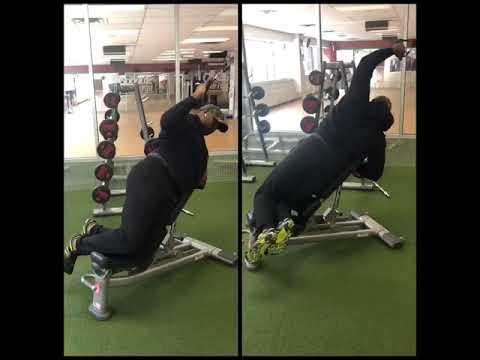
The position essentially immobilizes your upper body and removes the involvement of any cheating muscles like the lower back or abs. The goal is to avoid lifting heavy and focus on muscle recruitment.
Half-Kneeling Single-Arm Lat Pulldown
This is a common and effective pulldown variation that allows you to position your body more directly in-line with the cable pulley. An added benefit of the half-kneeling position is a passive stretch of the hip flexor on your kneeling side and increased glute activation to stabilize your hips and pelvis during the exercise.
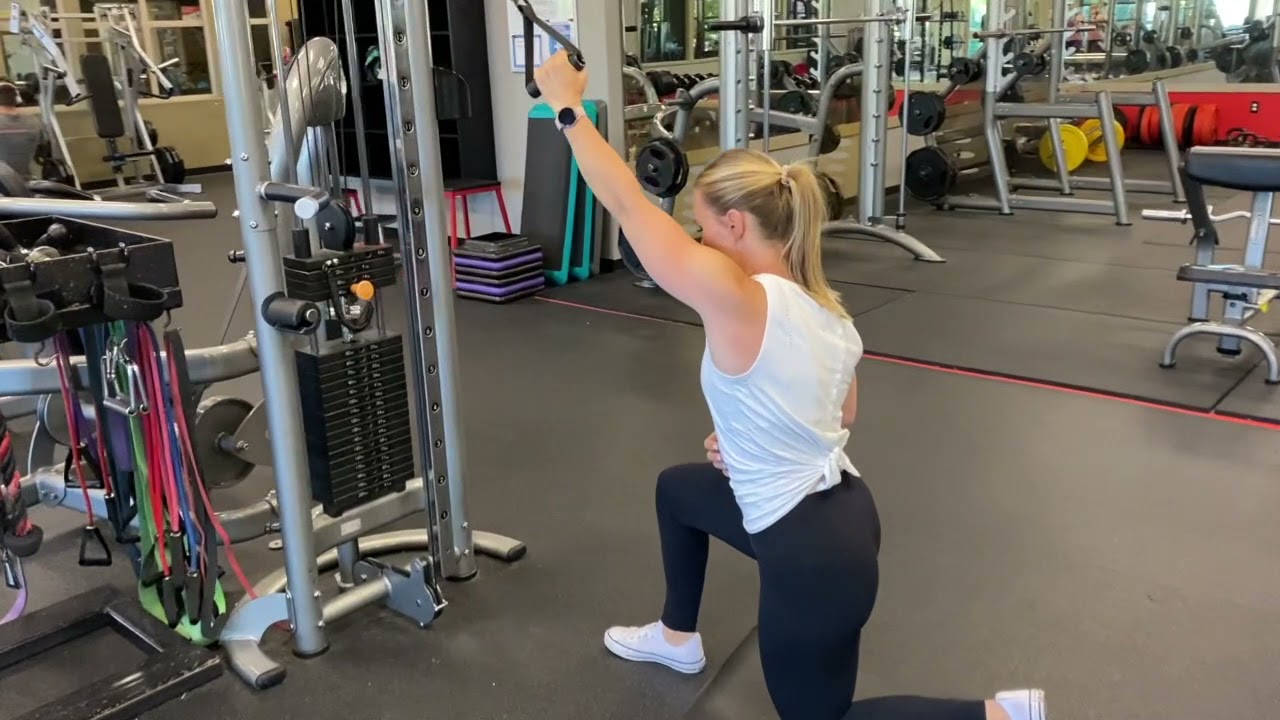
However, the half-kneeling single-arm lat pulldown can also change the pulling angle by adding a diagonal, slightly more horizontal, line of pull rather than an overhead (vertical) pulldown motion. This can increase recruitment of your upper back muscles and may reduce the work done by your lats.
Frequently Asked Questions
You can, as long as they’re programmed differently. The single-arm lat pulldown can either be used as the first exercise, as a “primer” to activate your back muscles, or as the last exercise to thoroughly work your fatigued lats and upper back by isolating each side.
If you use a different set/rep scheme for each movement — for example, starting with four sets of eight straight-bar lat pulldowns and ending the session by doing the single-arm lat pulldown for three sets of 12 reps — you can avoid redundancy in your workouts.
Bigger Lats, One Side at a Time
The single-arm lat pulldown is the intermediate back-training movement you didn’t know you needed. Make sure you have the classic pulldown movement down pat, along with a good handle on basic mechanics of your shoulders and shoulder blades. Then it’s off to the races as you use the exercise for higher volume and great isolation. Time to get some single-sided gains while building a powerful and more muscular back.
References
- Pallarés, JG, Hernández-Belmonte, A, Martínez-Cava, A, Vetrovsky, T, Steffl, M, Courel-Ibáñez, J. Effects of range of motion on resistance training adaptations: A systematic review and meta-analysis. Scand J Med Sci Sports. 2021; 31: 1866– 1881. https://ift.tt/1c9j7ny
- Youdas, J. W., Amundson, C. L., Cicero, K. S., Hahn, J. J., Harezlak, D. T., & Hollman, J. H. (2010). Surface electromyographic activation patterns and elbow joint motion during a pull-up, chin-up, or perfect-pullup
 rotational exercise. Journal of strength and conditioning research, 24(12), 3404–3414. https://ift.tt/G2QjNuy
rotational exercise. Journal of strength and conditioning research, 24(12), 3404–3414. https://ift.tt/G2QjNuy
Featured Image: @coachleeboyce / Instagram
The post How to Do the Single-Arm Lat Pulldown for Back and Biceps Gains appeared first on Breaking Muscle.
from Breaking Muscle https://ift.tt/TVlexbE https://ift.tt/pqzks8f







No comments
Post a Comment
Please do not enter any spam link in comment box.